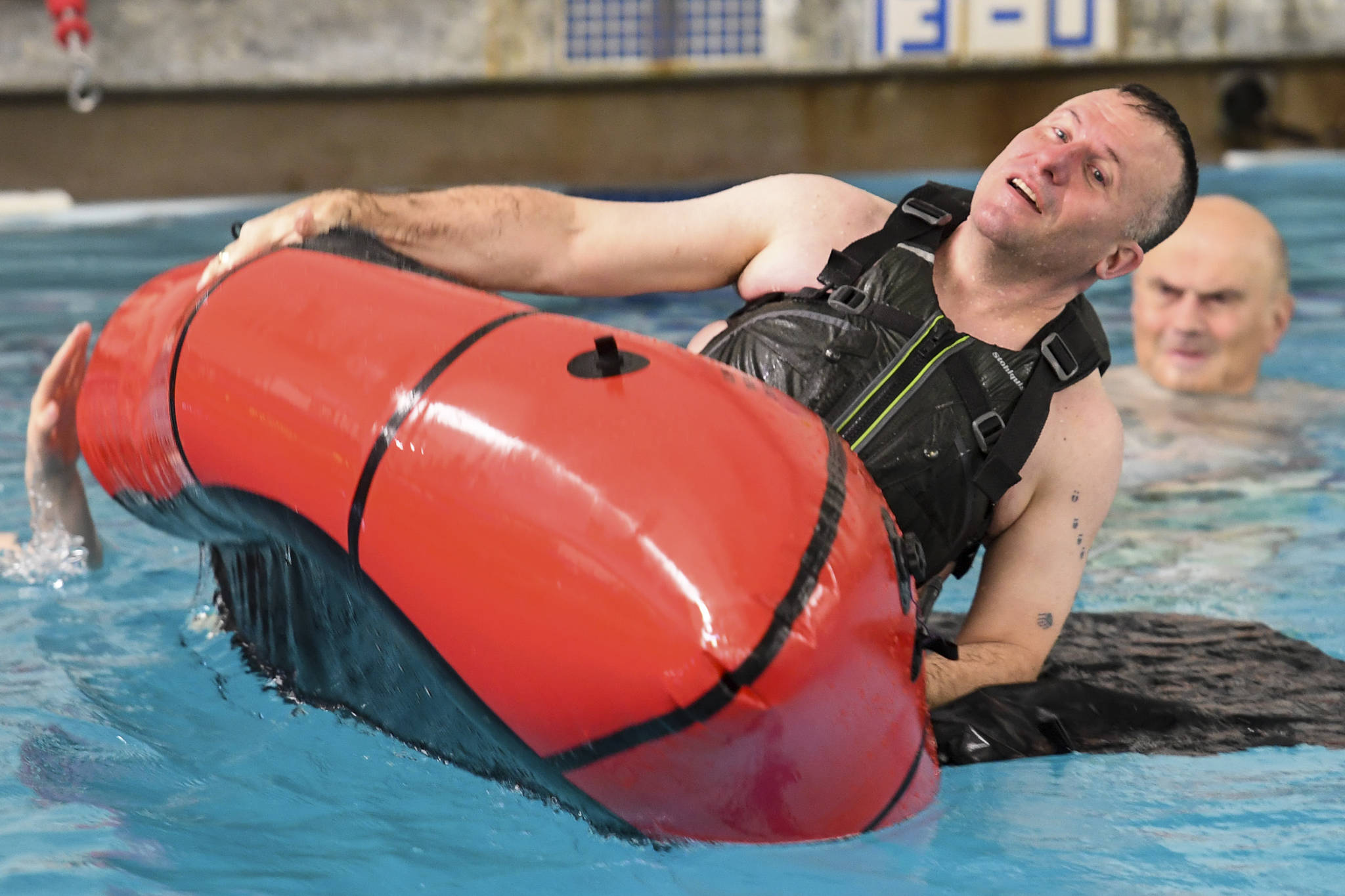Alaska is proportionally the most dangerous state for boating, according to U.S. Coast Guard statistics, and the Coast Guard is doing something about it.
To combat the fierce weather, frigid water and high rates of boating activity., the U.S. Coast Guard sends dozens of trained Coast Guardsmen to schools across Alaska during the months of late winter to teach schoolchildren how to survive crashes and capsizings in the perennially cold waterways of Alaska’s interior and coasts.
“In the mid-’90s, Alaska had a lot of boating-related fatalities,” said Lt. Cmdr. Jonathan Dale, a prevention officer with USCG District 17’s Office of Recreational Boating Safety. “It was 10 times the national average.”
Out of that high rate of casualties grew the Kids Don’t Float program, which originated in Homer in 1996 and grew into a joint USCG-State of Alaska venture. The program, which includes both an education component and assets like loaner life jackets at public piers, has been a great success, Dale said.
“There’s been 36 credited, known saves from life jacket loaner stations,” Dale said.
[Alaska boating deaths up for third year in a row, according to a Coast Guard report]
The highest number of boating-related deaths in 2018 occurred in cases in which the victim wasn’t wearing a life jacket, according to the Coast Guard’s annual report on boating accidents.
Now, the Coast Guard sends teams to every school in a community on any sort of navigable waterway on a rotating basis, Dale said. The purpose is to reinforce the habit of wearing personal flotation devices and teach best practices in the event of an accident.
“One of my favorite lessons is to fill a five-gallon bucket with ice and snow and a little water, have them put their hands in there for as long as they can, and then try and put on a life jacket with the three buckles,” Dale said. “Then, have them imagine their whole body is in the cold.”
Training includes using and donning in the water various kinds of personal flotation devices as well as techniques for righting a capsized small craft and reentering a small craft from the water. Dale says that getting kids to wear life jackets early, drilling in those habits in school, will help them to take the habit to heart and hopefully spread it to their parents, Dale said.
“99 percent of the time, we’re wearing a life jacket, we are dry, and we don’t feel the buoyancy,” said Annie Grenier, an instructor with Alaska’s Office of Boating Safety, who teaches the Coast Guardsmen how best to instruct schoolchildren in water safety, during a period of instruction.
More than 100 Coast Guardsmen in Juneau, Sitka, Kodiak and Anchorage will go through the training for teaching boating safety. After the training is completed in November and December, Dale said, assignments will be made, and Coast Guardsmen will travel in teams of two to schools in about 25 communities north of Nome in February through April.
“Right here, in the pool, we have Coast Guardsmen from six different units and the (Coast Guard) Auxiliary,” Dale said. “It’s a glimpse into the Arctic life but it’s also teaching kids. It’s a pretty neat experience.”
[Petersburg man struggled to save companion in boating accident]
The schedule ensures kids will be in school, Dale said, and they will receive instruction in survival skills before they assist their parents with subsistence fishing or gathering in the summer.
Next year, the safety instructors will visit schools in communities south of Nome, alternating annually to keep this generation of schoolchildren around the state current.
“Everyone who gets trained here will be going out and teaching the classes,” Dale said.
Interested in boating safety?
“We can help any group, any organization,” Dale said. “Call us. We love to teach this. It saves lives.”
People interested in organizing a boating safety class can contact Mike Folkerts, boating safety specialist for the Coast Guard, at 463-2297.
• Contact reporter Michael S. Lockett at 757-621-1197 or mlockett@juneauempire.com.

